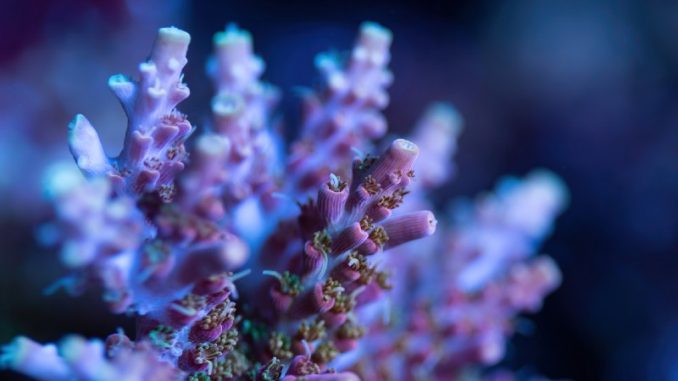
Coral growing and fragging is a hobby that is taken very seriously by many coral enthusiasts. The wonderful world of coral fragging is serious stuff and can take a very long time to get to grips with, but don’t worry, this post should help you make sense of the coral fragging business before getting started.
One of the best things about coral fragging is a huge community of fellow coral enthusiasts who love to swap and trade fragged coral to give others the opportunity to grow corals that they haven’t tried yet. I suggest visiting your local reef club and connecting with coral growers on social media so that you can take advantage of these opportunities too.
By the end of this article, you should know what a frag tank is, the difference between the types of coral frag tanks, what goes into a frag tank, and how to start fragging. Enjoy!
What is a Frag Tank?
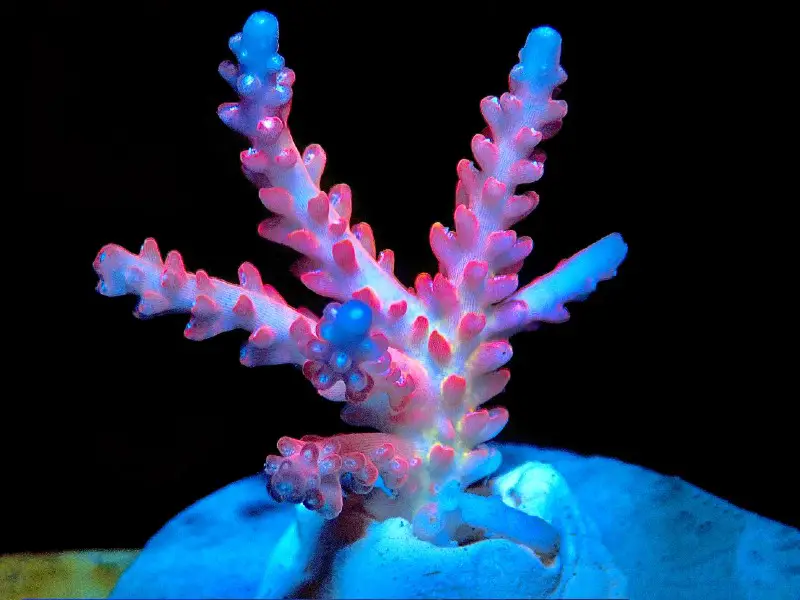
A frag tank is separate from your main fish tank. Frag tanks are dedicated tanks that allow coral cuttings to heal and grow in their ideal growing conditions. If you have coral in your main tank, you might remove some of it and grow it separately in a frag tank. Likewise, if you have been given a piece of fragged coral, you might want to place it in the frag tank until it has been established and healed sufficiently.
Types of Frag Tanks
There are many types of frag tanks for you to choose from. If you aren’t familiar with the difference between each setup, knowing which one to go for is incredibly challenging. I have gone over the most common types of frag tanks below for your reference.
Display Frag Rack
If you are new to coral fragging, you will probably feel the most comfortable with a display frag rack to start off with. A display frag rack is a magnetic rack that you place your coral frags on. This is a brilliant method if you want to save money, but be careful not to overload your tank with display frag racks as they can look very messy.
Sump Frag Tank
A sub frag tank is done in aquarium sumps and in customer sumps. You will need to use a grow-out light to help you grow the frags. Lights made for nano reef tanks are perfect for the job.
This is another money-saving frag tank option that could be convenient if you have the right setup. You might want to install an aquarium wavemaker to aid the process.
Integrated Frag Tank
This is a separate aquarium from your display tank; however, an integrated frag tank does share the water with your main display tank. You will need to install special plumbing to connect the two tanks together.
Using an integrated frag tank setup requires special attention. If you have a pest or disease problem in one of the tanks, it will be transferred to the other tank because the water is connected. This could seriously damage your coral frags and ruin your hard work.
Stand Alone Frag Tank
A stand-alone frag tank is exactly what it says on the tin. It is a completely separate frag tank from your main display tank that operates using its own filtration system and equipment.
This is the method that gives you the most control over the environment in both your frag tank and display tank. Anyone with some reef experience usually prefers this method over the others as it lets you grow corals to scale, but it is expensive and difficult to regulate, so opting for this method does require skill and experience.
What Should I Put into a Frag Tank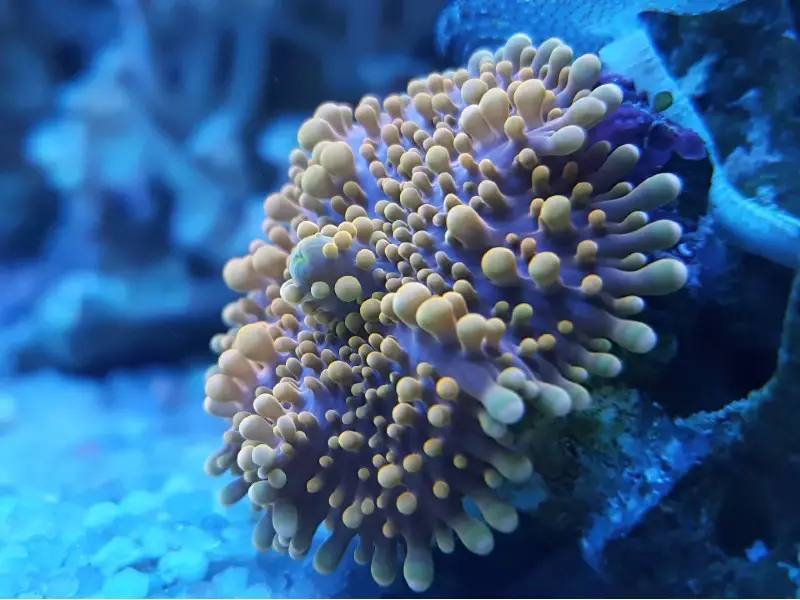
Aside from equipment, what should I put in my frag tank? You have quite a few options here. Your frag tank could be more of a coral display tank, or you can keep little reef-loving fish in the tank with your coral. There are pros and cons to both setups. Here is a little bit about what you can expect in each setup.
Coral Only
If keeping fish in your frag tank doesn’t appeal to you, you will need to closely monitor the nitrate and phosphate levels. The only way to do this in an organic fish-free tank is by feeding your coral regularly. Alternatively, you could chemically dose the water with phosphate and nitrate.
Coral and Fish
Fish love coral and coral certainly love fish! Fish add a lot of nutrients to your coral tank, which is great for keeping the water at the right nutrient levels. The only downside of having fish in your frag tank is that your tank is more prone to pests and diseases than a coral-only tank.
Coral that Grow Well in a Frag Tank
Most corals can be fragged. This is particularly true for mushroom coral as they seem to grow well even if just a tiny piece of the main coral is removed. I do want to warn you that newly purchased corals are harder to frag, and you could find yourself killing or seriously damaging your main display if you attempt to frag it prematurely.
Here are some of my favorite coral to frag as they are hardy and very easy on the eye. If you are new to coral reef keeping and fragging, I suggest trying to keep one or more of these to start off with.
Star Polyps
Star polyps are the ideal coral for new coral keepers to go for. They are incredibly easy to care for, very inexpensive, and readily available at most aquarium stores. Some call this species ‘the coral weed’ because of its resistant nature.
Leather Corals
These low-growing mushroom-shaped corals make wonderful centerpieces in a reef tank. I love how this type of coral changes over time. Leather coral has bright green tentacles; however, they will retract at some points for a long period of time, and the coral will produce a thick waxy substance at the base of the plant. This is the coral’s way of cleaning itself, so don’t panic; just make sure that there is sufficient water flow in the tank.
Open Brain Coral
The open brain coral has a very small skeleton that supports a large floppy and very fleshy polyp. Ideally, you should place it directly on the substrate at the bottom of the tank.
This coral grows brilliantly in low light conditions. Most coral reef enthusiasts keep an open-brain coral in their aquarium because of its bright colors and ease of care. Use blue lighting in your aquarium if you want its bright red polyp to pop.
Trumpet Coral
This species of coral is another beginner’s favorite due to its size and bright coloration. It is usually a green or blue-green color which varies quite a lot within the species.
If you want to find the easiest coral to place in a frag tank, this is it. All you will need to do is to remove one of its many polyps from the main skeleton and place it in the frag tank of your choice.
Bubble Coral
Bubble coral is a type of stony coral. It is very easy to care for, but you should be careful not to keep it in a tank with strong water currents as that will damage it. Its polyps are very delicate, making sure that the coral has plenty of room in the tank and does not place it near any hard rocks or tough surfaces.
The Importance of Coral Fragging
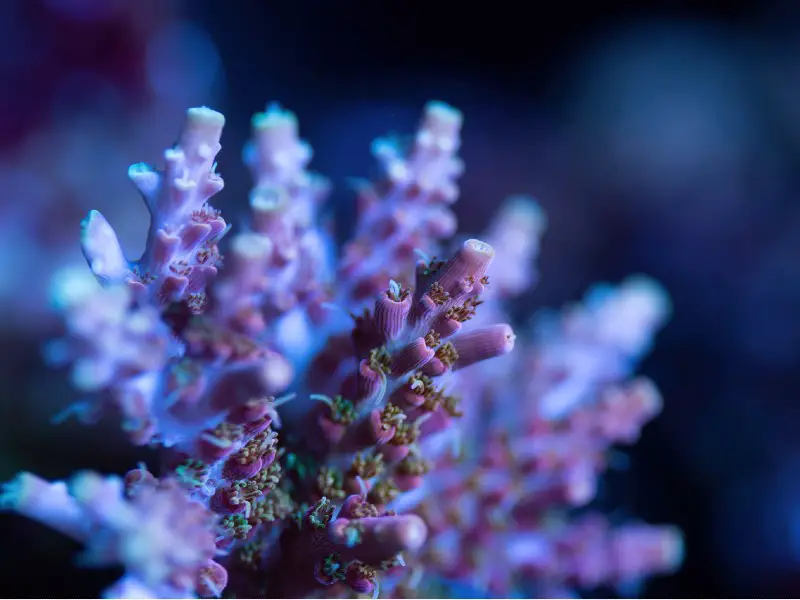
Coral fragging is more important than you may think. You might be doing it purely for pleasure, but preserving and propagating coral goes beyond our home aquarium enjoyment.
Let’s look at why it is important to aquarium enthusiasts. Here is how coral fragging could benefit you:
Shelter for Small Fish
Coral reefs are ideal shelters for many aquarium fish. Of course, you could put synthetic shelters and decorations in your aquarium for your fish, but fish much prefer the real thing. Placing synthetic coral in your fish tank puts your fish at risk of ingesting plastic, so keep this in mind when choosing accessories for your aquarium.
Great Small Business Idea
You can sell your newly fragged coral for a reasonable price to friends and family or even online to other coral enthusiasts. Selling coral overseas or sending them to other states may be difficult as they are very fragile. You should also look at the rules and regulations surrounding selling coral before embarking on this as a business venture; nonetheless, it is a possibility.
Better for Your Aquarium than Wild Coral
Wild coral is harder to keep in your aquarium than propagated coral. Think about it; fragged coral have started their lives in an aquarium, so they haven’t been exposed to pests and diseases that wild coral has.
Fragging coral is also more environmentally friendly than going to the sea and removing coral from its natural habitat. If you have been tempted to do this, you should look up the rules and regulations for removing coral from the ocean. It is forbidden to remove coral from the sea in most states.
How to Start Coral Fragging
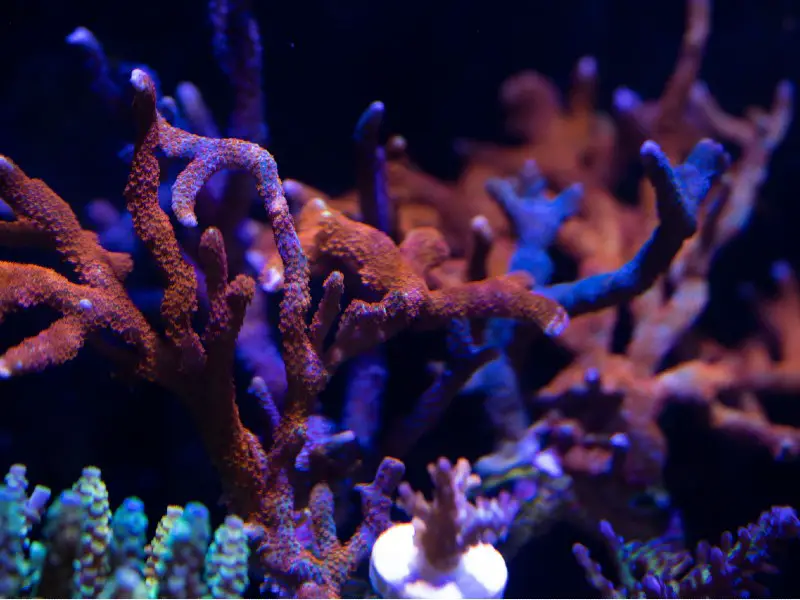
The first rule for keeping and fragging coral is to be selective in your choices of coral. You don’t want to have too many corals in a tank at once, as they won’t have enough space to grow and thrive.
You should also only consider fragging coral that is well established and healthy. New coral or coral that has recently suffered from a pest infestation or disease should not be fragged. Here is a step by step guide for fragging coral:
1. Sterilize Your Equipment
Sterilize your coral cutting equipment before cutting the frag. This ensures that the fragged piece will heal as fast as possible. This is also a great time to check the nitrate and phosphate rate in the fragging tank. You want everything to be in place and ready for your coral frags before you remove them from the parent plant.
2. Cut at the Base
You should always remove the frag at the base of the plant. Including some of the base, the rock will make sticking the coral frag to the plug much easier.
3. Dry the Base
You should dry the base of the frag with a clean cloth or paper towel. Make sure that the base is completely dry; otherwise, you may find it difficult to stick the base to the plug.
4. Add Glue
You will only need a couple of dabs of glue to secure the frag to the plug. Do not overuse glue as the coral will naturally stick itself to the aquarium over time.
5. Place in a Tank With Low Flow
You must place the frag in a tank with a very low flow. This is so that the flow of water does not stop the coral from sticking to its new home.
Top Tips:
I want you to have the best experience fragging coral, after all, mistakes can cost you an arm and a leg, and that can turn the hobby into a burden. Use these top tips to help you out and save them for future reference.
1. Use Clean Equipment
Keeping things sterile is key when propagating aquarium plants and coral. Never use a knife or scissors that is usually used for cutting food or other non-aquarium-related substances.
2. Propagate Established Coral
Fragging young coral or coral that hasn’t been in your tank for long enough is very risky. You need the coral to be healthy and strong before considering fragging the coral.
3. Keep Fish in the Tank
Keeping fish in a coral tank is one of the smartest things to do. Fish are responsible for adding nutrients to the tank, so although caring for them may add a few things to your to-do list, it is worth making the extra effort.
4. Don’t Overcrowd the Tank
An overcrowded coral tank is a big no-no. Coral reefs need space to flow in the water and to grow to their maximum capacity. If you see that your corals are overcrowded, or they have outgrown the tank, you should frag them or move some to a different tank.
FAQ:
Do you want to learn some fun facts and additional information about coral fragging? The following frequently asked questions sections should help answer those last coral fragging questions you may have.
Q: Does fragging hurt coral?
A: Choppy seas and harsh conditions naturally frag coral in the wild. Doing this artificially in an aquarium is beneficial to coral as it keeps them well maintained and pruned. You should also remove damaged pieces of coral to help the coral heal and grow healthy polyps.
Q: Will coral attach itself to rocks?
A: Free swimming coral will attach itself to rocks. If you have free-swimming coral in your aquarium, you may find the coral sticks to and grows to any hard surface in the tank.
Q: What happens if I leave coral out of the water?
A: If corals are left out of water for a long period of time, they will begin to shrink and slump over, eventually drying out completely and dying. This does take some time, so if you need to remove the coral for a short period of time, then you don’t need to worry about anything happening to it.
Q: How long does it take for a coral frag to grow?
A: You can expect a coral frag to secure itself and begin to grow within a week or two of being fragged. Once the coral is secure, it will continue to grow very slowly.
Q: Should I add coral or fish to an aquarium first?
A: This all depends on how much experience you have growing coral and keeping fish. You should always start with the hardest first, so if you are an experienced fish keeper but an inexperienced coral keeper, you should start with adding coral to the tank and then introduce the fish once the tank is established.
Q: Should I remove the coral frag plug?
A: There is nothing wrong with keeping coral frags on the plug. You might want to remove them for aesthetic purposes, but other than that, leaving them on the plug is absolutely fine.
Q: How soon can I add coral to the tank?
A: Coral should be added to the tank once it has finished its Nitrogen cycle. Once your tank has been cycled, you should perform regular tank checks and keep on top of maintenance to ensure your coral stays in the best condition.
Q: Can dead coral be revived?
A: Yes, dead coral can be revived if they have died from being exposed to warm water due to climate change. Do not attempt to revive dead coral from your tank as it takes a long time, and you might not be able to save the coral after all your efforts. You should remove dead and damaged coral from the tank as it could result from diseases or pests.
Q: Can coral get too much light?
A: Yes, it is surprisingly easy to expose coral to too much light. You might do this accidentally by changing the lighting to accommodate a certain species of fish. That is why checking the compatibility of all aquarium inhabitants is vital beforehand.
Q: What are the easiest coral to keep?
A: star polyps and open brain coral are two of the easiest coral to keep. I have listed another three easy corals to keep and frag in the article above.
Q: What glue should I use for fragging coral?
A: Thick varieties of super glues are ideal for sticking coral frags to plugs. Runny glue that doesn’t dry fast will not work when fragging coral.
Q: Can coral survive a cycle?
A: You shouldn’t keep coral in the tank while it cycles; however, if you don’t have a choice, your coral should survive the cycle as long as the ammonia part has passed. This is a very risky thing to do and could ruin all of your hard work, effort, and time. If you can move the coral to another established and cycled tank while the main tank is cycling, then your coral will stay healthy and happy.
Have you got any tips and tricks to share with us about coral fragging and frag tanks? We would love to hear about your frag tank experiences and learn about the frag tanks that worked best for you. Share your frag tank experiences in the comments section below!

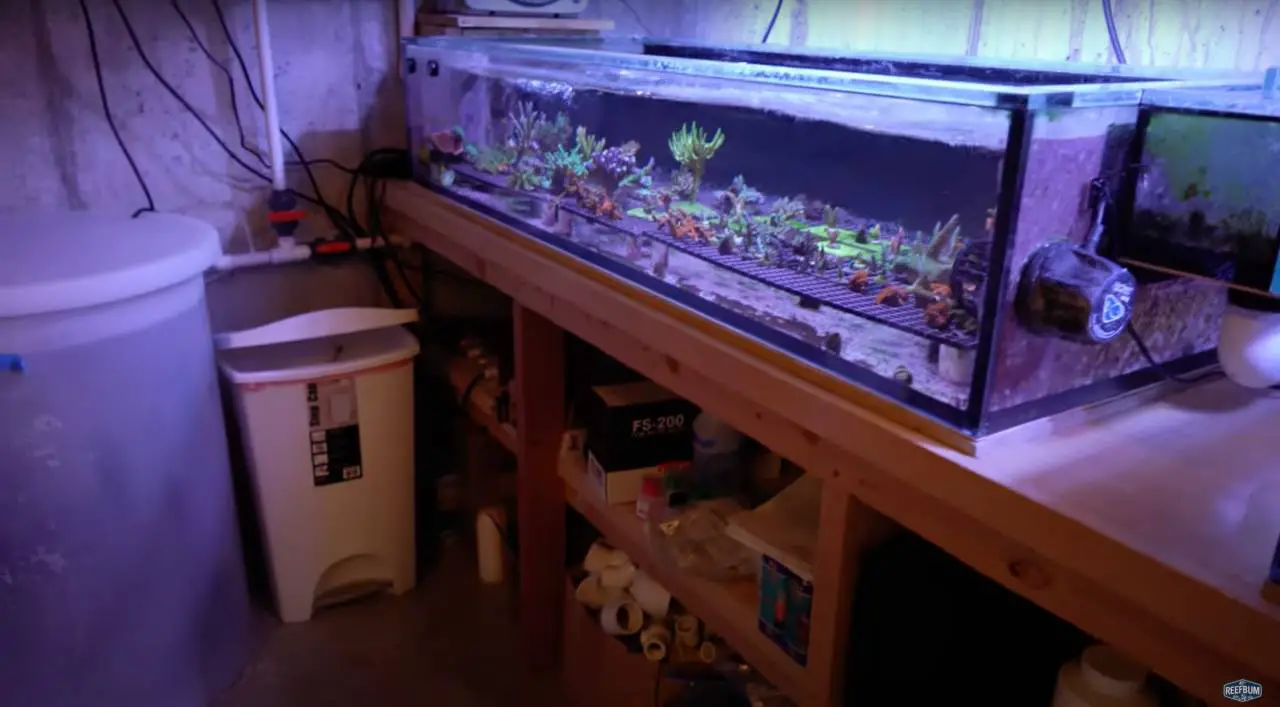
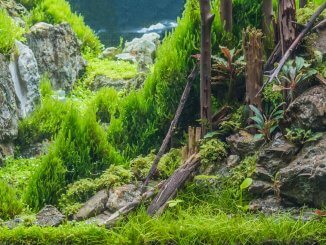
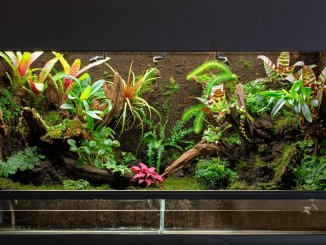
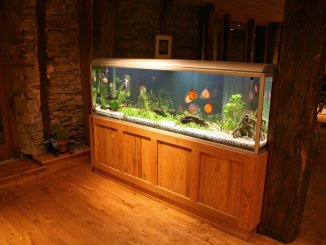
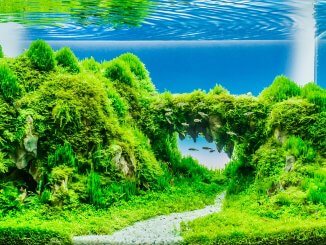
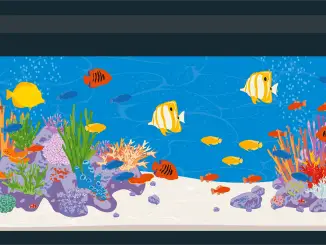
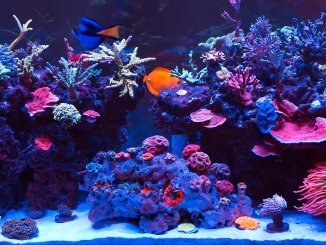
Be the first to comment